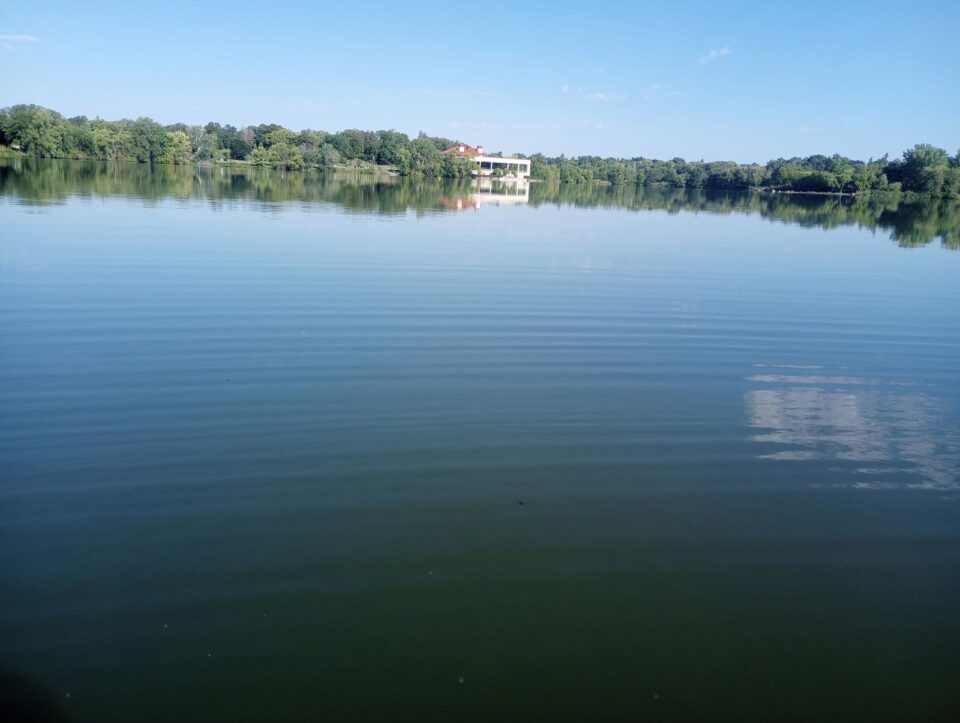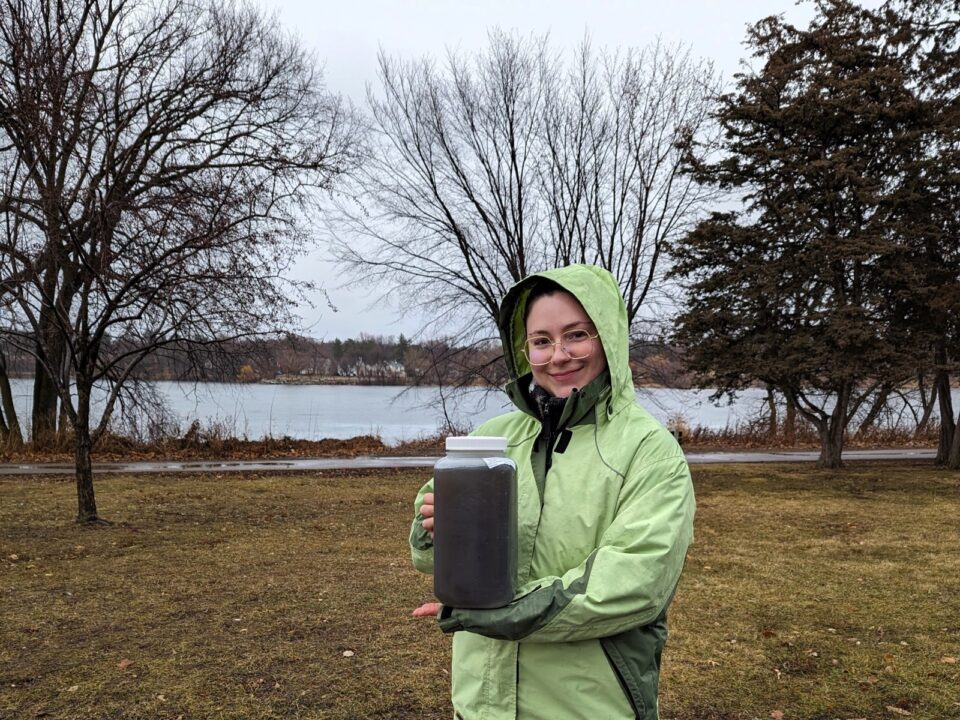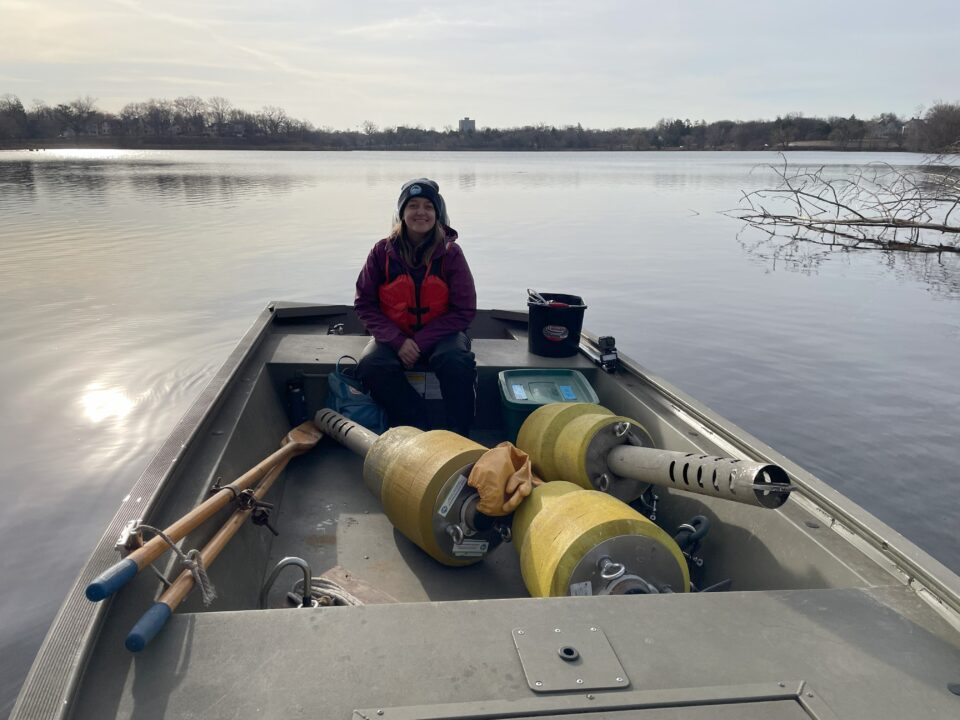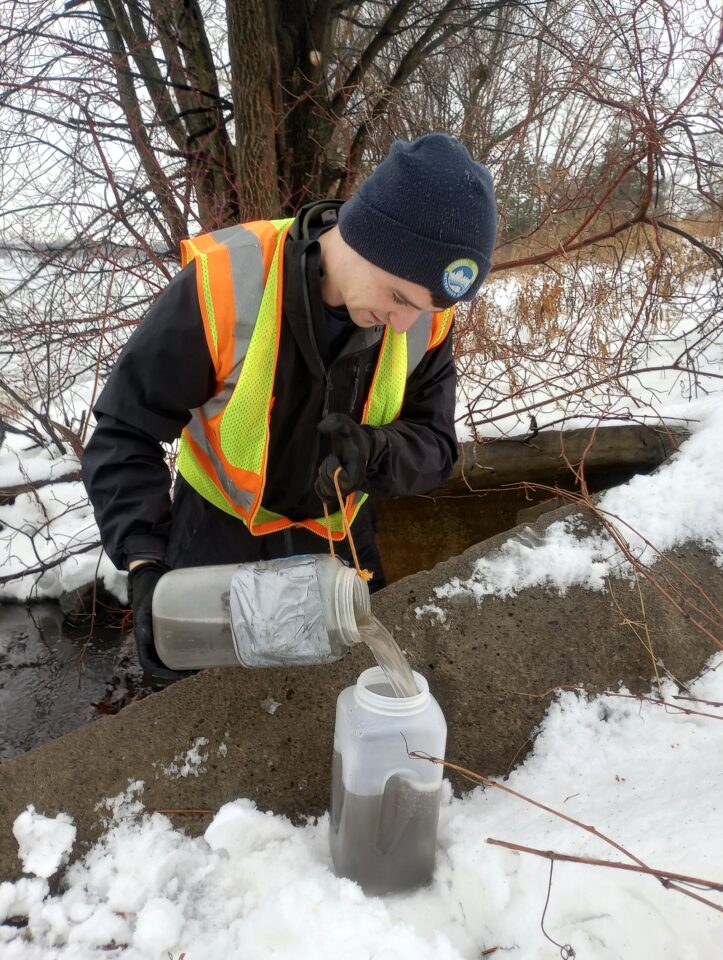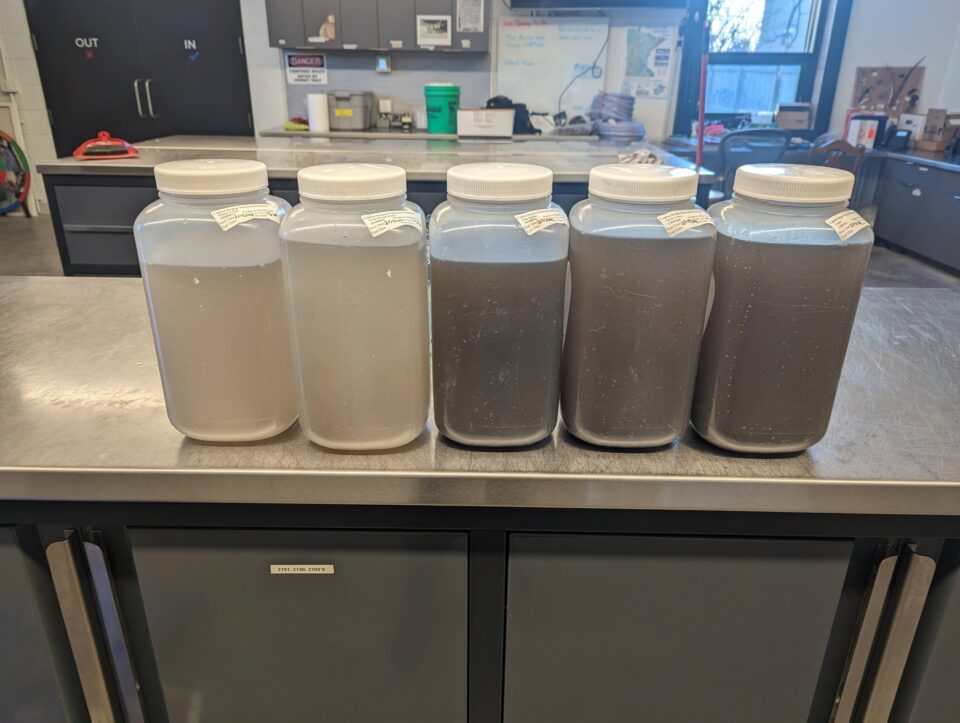Como Lake 2023 Recap and 2024 Update
Let’s start with the big news: In 2023, Como Lake had the best water quality on record! Capitol Region Watershed District (CRWD) has been working to improve the 70-acre lake’s water quality for over two decades, and it’s exciting to witness the results. Many clean water projects and work in and around the lake are helping us achieve our water quality goals. Better water quality means fewer algae blooms, less odor, better wildlife habitat, and an overall ecologically healthier Como Lake.
Issues Affecting Water Quality
Como Lake had a long history of poor water quality, mainly due to excess phosphorus. Phosphorus comes from leaves, grass clippings, pet waste, and soil carried to the lake in stormwater runoff. Over time, phosphorus built up in the lake — reaching levels as high as three times the Minnesota state standard — causing algae blooms, fish kills, and strong odors mid-summer. CRWD worked to reduce phosphorus going into the lake via clean water projects like residential rain gardens and the Como Golf Course Best Management Practices, and then targeted phosphorus in the lake with an alum treatment in 2020.
Also problematic to Como Lake’s water quality is the invasive aquatic plant curly-leaf pondweed (CLP), which has dominated the lake’s ecosystem for years. Its unique life cycle allows CLP to thrive in Como Lake, making it difficult for native plants to grow. Decaying CLP also adds phosphorus to the water when it dies off mid-summer, causing more problems for Como Lake’s water quality. CRWD does herbicide treatments to target curly-leaf pondweed while working with the Minnesota Department of Natural Resources (DNR) to create a more diverse aquatic plant community in Como Lake by transplanting a variety of native plant species from a nearby lake.
You can learn more on the Como Lake Aquatic Plant Management page.
2023 Monitoring Season Recap
In 2023, Como Lake had the best water quality observed in over forty years of record, and the record’s lowest average annual total phosphorus value!
Anecdotally, staff noted fewer algae blooms causing nuisance odors that impact the lake. Water clarity in 2023 was excellent, and staff reported seeing the bottom of the lake while paddling across. The improved water clarity is thanks to the cumulative effect of clean water projects, the 2020 alum treatment, curly-leaf pondweed management, and the rebounding native aquatic plant community in the lake.
Updated modeling data shows that CRWD is getting closer to our goal for Como Lake of a 60 percent reduction in phosphorous from stormwater runoff with each best management practice (BMP) project installed in the lake’s subwatershed. Check out our Targeted Watershed Program page for more information.
2024 Monitoring Season Update
The early ice-out on Como Lake allowed staff to install monitoring equipment much earlier than typical. Staff installed the three yellow buoys on March 12, 2024. Staff install the buoys at the same locations every year and also collect winter monitoring samples at the same places. Each buoy has a sensor that hangs near the bottom of the lake to record temperature, pH, specific conductivity, and dissolved oxygen. The buoys will stay in the lake until CRWD removes them in November before ice-in.
The data we collect at Como Lake helps us calculate water quality and annual trends of the phosphorus in the lake to help us determine if the 2020 alum treatment is still working. Staff visit the lake weekly to download the data and ensure all equipment functions properly. CRWD and our partners at Ramsey County Public Works conduct bi-monthly water quality sampling and continuous dissolved oxygen, temperature, pH, and water level readings from April – November. You can review our 2023 Lakes Monitoring Data Summary PDF.
The winter of 2023-2024 was the warmest winter on record and also the least snowy on record. Como Lake had the shortest ice-on period on record, and the lack of ice or snow build-up on the ice affected the lake in various ways.
- Because of the extended growing period, curly-leaf pondweed got an even bigger head start than usual on the native plants. Curly-leaf pondweed thrives because it is well adapted to growing in cold conditions under ice while native plants are dormant.
- The dissolved oxygen at the bottom of the lake stayed much higher than in previous winters following excellent water quality conditions in the fall. Ramsey County did not need to install the aerator at Como Lake due to the short period of ice on the lake and the higher level of dissolved oxygen.
- You can review our 2023 Climatological Summary PDF.
Storms in late March also impacted Como Lake, causing debris, leaves, salt, and trash to suddenly flush into the lake via storm sewers from roads, sidewalks, roofs, and other paved surfaces. CRWD staff collected noticeably dirty stormwater samples from the March 25 storm.
2023 was a record-breaking year. We’ll be tracking data and monitoring Como Lake as we see what 2024 brings.

